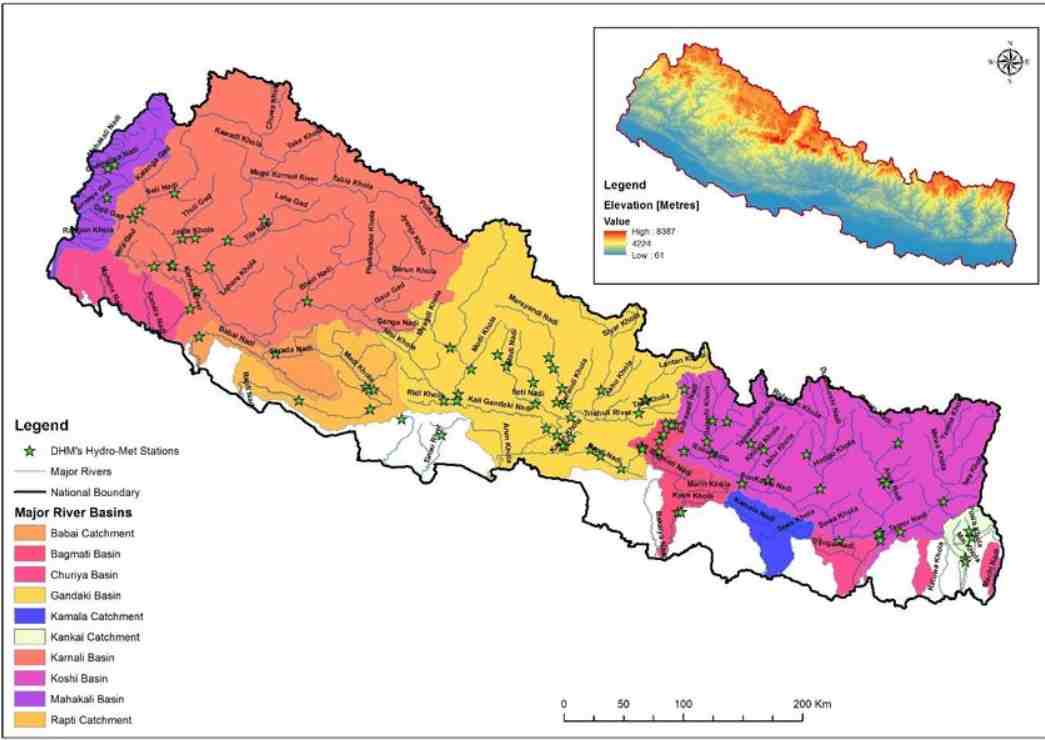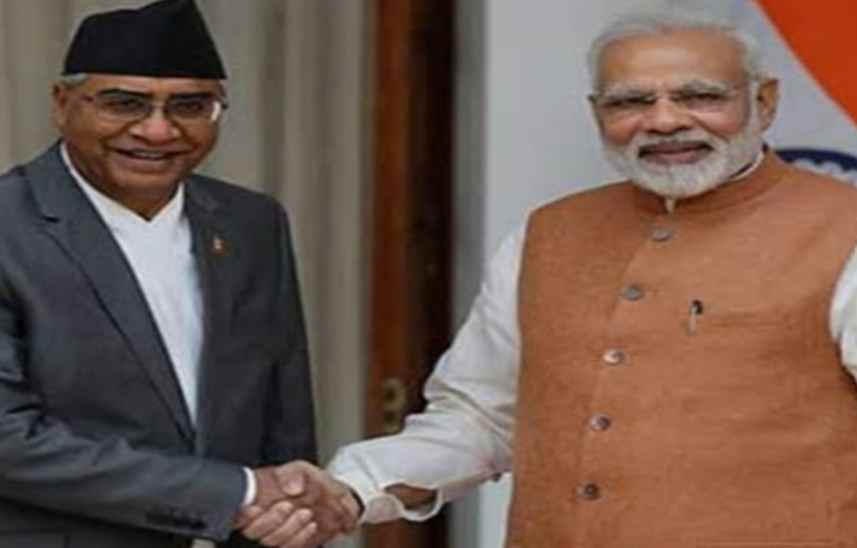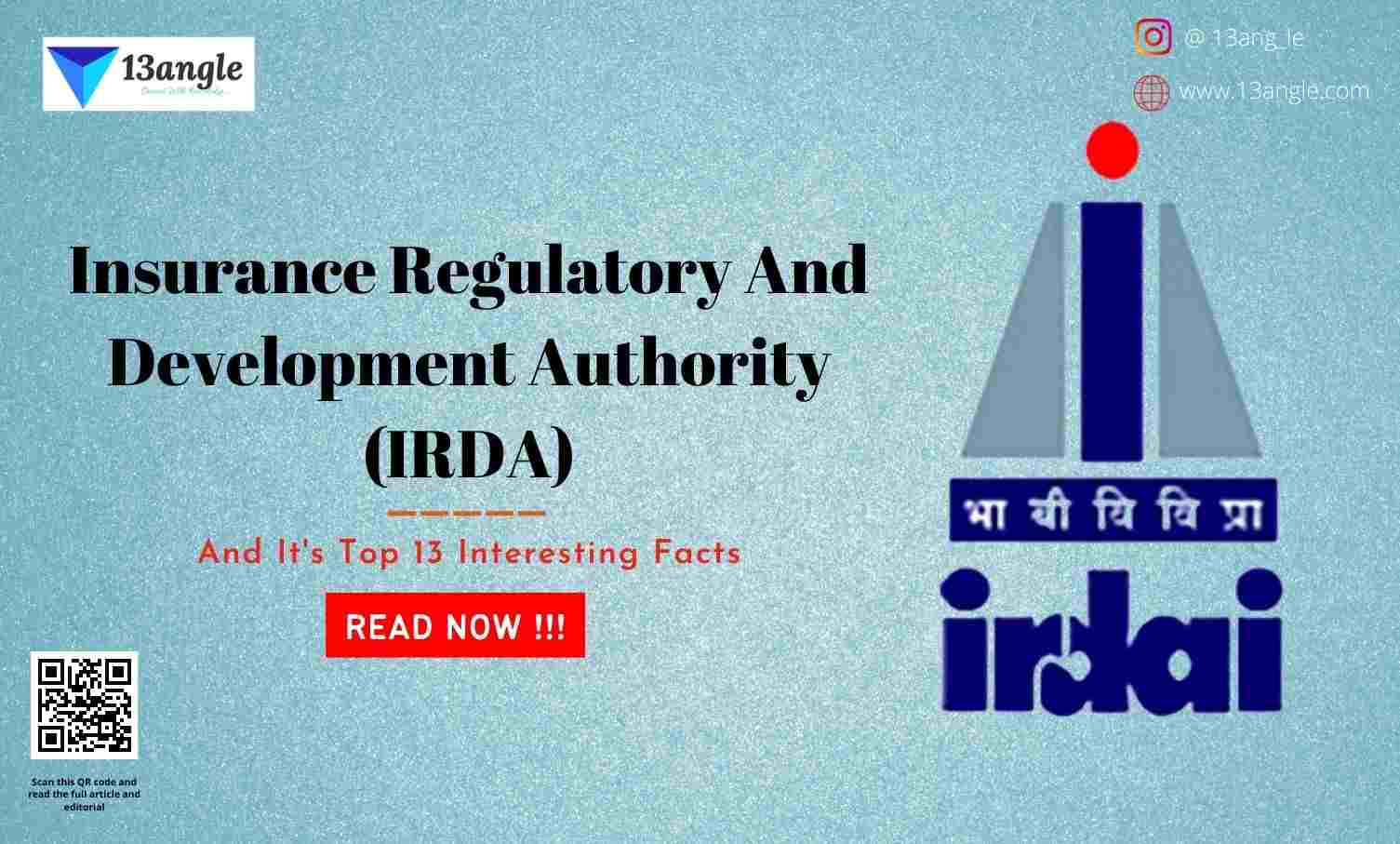
Introduction
India’s National Hydro Power Corporation started initial work on the site with the permission of Prime Minister Narendra Modi who himself visited Lumbini for the project. India will be taking over an ambitious hydropower project in Nepal-west seti. India was Nepal’s power market so it will not buy power from china executed projects so west Seti is given to India. West Seti and seti river are joint projects and it has the capability to generate 1200 MW of electricity. The proposed 750-Megawatt west Seti hydropower project is to be built on the Seti River in far Western Nepal. Before knowing more about this project, we must know about India and Nepal agreements and their collaborated projects.
India and Nepal have bilateral ties based on their age-old tradition, religion, culture, and connection through history. Nepal is dependent on India for the supply of essential goods. In India, as per articles 6 and 7 Nepalis can work and live in India for a continuous period. Indians on the other hand can own Nepal’s property but before purchasing they must consult with a local lawyer about the information about the land. Nepal’s dependence on India for petroleum was of great concern. Nepal and India share common food, culture, civilization, and mythology to a great extent.
Treaty Of Peace And Friendship 1950
This treaty gave full rights over the military equipment of Nepal to India. Nepal tried to import arms elsewhere but faced a massive economic blockage along its border with India. It is a bilateral treaty between India and Nepal establishing a relationship between the two south Asian Neighbours. The treaty was signed in Kathmandu on 31st July by the late Rana Prime Minister of Nepal Mohan Shumsher Jung Bahadur and Indian Ambassador Chadreshwar Narayan Singh and it came into force on the same day as per Article 9 of the treaty. The treaty develops close relations between the two countries and allows the free movement of people and goods. They also have close relations with each other in foreign policy and defense. Indian passport holders do not require visas to travel to Nepal Indians are only required to carry a valid issued by the Government of India or the Election commission.
Indians require a pan card, education documents, etc. for entry to Nepal.
They both will respect each other Sovereignty, territorial integrity, and independence.
India also grants concessions to Nepal.
Mahakali Treaty 1996
On 12th Feb 1996, Nepal Prime Minister Sher Bahadur Deuba and Indian Prime Minister P.V. Narasimha Tao in Delhi ratified the treaty by parliament with a 2/3 majority on 20th September. The treaty was concluded in four months of negotiations that an integrated development should take place.
The government of India had signed water treaties with neighboring countries in the past for mutual benefits in the field of Water resources. This river Mahakali originates from Nepal and forms the border between India and Nepal. It is known as Sarda in India. Treaty shows equal partnership for both countries. This project also includes Tanakpur Barrage, Sarda Barrage, and Parmeshwar Project, this treaty has enormous potential for hydropower generation. It should be reviewed after every ten years.
Upper Karnali Project
- The main river source of this project is the Karnali river in Nepal for hydroelectricity generation. Its capacity is 900 MW but most of its power would be used by Bangladesh and India, only 108 MV remains for local use. Its cost was funded by Asian Development Bank. The project was expected to be started in the year 2023-2024. Three districts Surkhet, Accham, and Dailekh are under this project.

- Most of these projects were not functioning properly merely due to lack of funds or lack of interest or any other issues. India mainly focuses on hydroelectric power generation in a huge amount which can be beneficial for India as Nepal has an abundant source of water bodies which can be helpful for India.
Border Issues Of India And Nepal
- The recent border issues related to Nepal and India include Kalpani, Limpiyadhura, and Lipulekh of Uttarakhand which Nepal now claims to be its territory and India also claims. The second dispute is related to the area of Susta in west Champaran district Bihar. India rejected Nepal’s claims as it is not based on historical facts and evidence. India is also said to respect its Sovereignty and integrity.
Perennial River System
- Perennial River means a river that has a continuous flow of surface water throughout the year in at least parts during seasons of normal rainfall the landlocked Himalayan Nation of Nepal is home to perennial rivers and 2% of the World’s water system belongs to Nepal. Some major water bodies of Nepal are KOSHI, GANDAKI, KARNALI, AND MAHAKALI. So, Nepal helps India with the perennial River system as well as in power sector cooperation which mainly includes the development of generation projects, construction of power transmission lines, and trade. All of these were mainly dependent on the abundance of water bodies present in Nepal.
Construction Of Transmission Lines
- India and Nepal agreed on the joint development of cross-border power transmission infrastructure for the development of viable hydropower Development projects in Nepal. Three members from each country will construct this hydropower project. India is enhancing cross-border economic connectivity as part of the neighborhood first policy. It is inaugurated in Laha chowk, Kaski district in Nepal under the Modi- Lekhnath Transmission line it has supported the construction of four transmit lines including 220 kV Koshi corridor, 132 kV solu corridor, Dhalkebar- Bhittamod section of the Muzaffarpur – Dhalkebar- 400kv cross border lines.
900 MW Arun III Project
The Arun III hydropower project is being developed on the Arun River in the Sankhuwasabha district of province 1, East Nepal. The ministry of science technology and environment approved the environmental assessment report for the project in August 2015. The hydropower plant construction commences in May 2018 and completion is scheduled for 2023. It is executed by India’s Sutlej Vidhyut Nigam under a boot scheme.
It includes the construction of a long concrete gravity dam on the Arun River. It will provide 21.9% of free power to Nepal during the concession period. It will help in uplifting the socio-economic levels of the locals, boost trade and industries and it will strengthen the bilateral ties between the two countries.
Operation Maitri

- Operation Maitri was a rescue and relief operation in Nepal organized by the Government of India and the Indian armed forces in the aftermath of the April 2015 Nepal earthquake. It started on 26th April 2015 by India’s Gurkha Regiment for relief and rescue of people in a troubled situations.
India – Nepal West Seti Project Information
The West Seti Hydro-electricity project is a 750 MW storage scheme proposed on the Seti River in the far Western Development Region of Nepal. The dam site is located 67 km from the Seti River. It will generate energy throughout the year, it stores excess wet season river flows in a reservoir and uses water to generate energy during demand periods. Nepal is rich with many rivers’ potential of 83,000 MW generation. Nepal is an important neighbor of India signed in foreign policy which includes geography, history, culture, and economic ties. India is the largest trading partner of Nepal. Both the countries engaged with SAARC, BIMSTEC, and BBIN. The locals are affected by the project in terms of rehabilitation and displacement so they will be given a share of Nepali Rs. 10 million plus 30 units of electricity per month free. The power will be supplied to India either for domestic consumption or for trade through its national grid. India has formally approached Nepal on many occasions seeking preferential rights over Nepali waters. India is also viewed as a feasible market. India has been facing an acute shortage of energy in its local market due to the ongoing war in Ukraine. India appears to have focused its attention on making investing in Nepal’s hydropower projects which will meet the energy demand. The 51st meeting of the investment Board Nepal chaired by Prime Minister Sher Bahadur Deuba has also decided to develop 750 MW West Seti and 308 MW Seti River 6 through direct negotiations with NHPC Ltd and the Government of India. Around 6,00,00 Indians who are living/ domiciled in Nepal includes businessman and traders who have been living in Nepal for a long time as professional and laborers.
The government of India has its embassy in Kathmandu and Consulate General in Birgunj.
The government of Nepal has its Embassy in New Delhi and a Consulate General in Kolkata.
Seti River
The Seti – GANDAKI river also known as the seti river or the Seti Khola is a river of western Nepal, a left tributary of the Trisuli river. Seti river is white as it has limestone minerals in the soil. It originates from the snow fields and glaciers from API and Nampa peaks.
This river is the only source of power generation for the west Seti project approved by the National Hydro Power Corporation.
China Ends A Six-Year Engagement With Nepal
- India takes over the west Seti project nearly four years after China withdrew from it ending a six-year engagement between 2012 and 2018. Although China denies allegations that the Nepalese government has canceled agreements with Chinese Companies. The 750 MW produced by the West Seti hydropower project is handed over to China Three Gorges Corporation in 2012 and later taken over by India. China also said that Nepal is not financially feasible, and its resettlement and rehabilitation costs were too high.
National Hydro Power Corporation
- Shri Abhay Kumar Singh is the current managing director of NHPC Ltd, and it is the largest organization for Hydropower Development in India. It has the capabilities to undertake all the activities to set up the hydropower projects. It has the vision to be a globally leading organization for the sustainable development of clean power through competent, responsible, and innovative values. Under the Ministry of Power in which a proposal was submitted which is the West Seti power project. Later Nepal received a formal proposal for the development of the project to be built on the Seti River.
SMEC Approval For The Project:
- Australia’s Snowy Mountains Engineering Corporation signed a project agreement with the Nepalese Government for the Development of the 750MW West Seti hydropower project on the West Seti River in Western Nepal. It has a right to control the whole water basin of the Seti River and sell power to India.
Nepal’s Constitution
- Nepal’s Constitution has a provision under which any treaty or agreement with another country on natural resources will require parliament’s ratification by at least a 2/3 majority.
EIA On West Seti Hydro-Power Project
- Environment Impact Assessment was introduced in the USA with the National Environmental Policy Act 1970, which ensures that along with economic and technology development, the environment should be taken into consideration, to avoid and mitigate the adverse effects on the local community for the project. EIA report was approved by the Government of Nepal and then the Ministry of population and environment. It proposed transmission line was prepared in November 2007 which includes a sample of households in the reservoir area. An agreement of ‘ Electric Power Trade’, cross border transmission interconnection and Grid connectivity between India and Nepal was signed on 21st October 2014. EIA aimed at facilitating and further strengthening cross-border electric transmission, grid connection, and power trade between the two countries.
Asian Development Bank
- Environment Impact Assessment was also approved by the ADB for the private sector loan, it is expected to receive loans from the Asian Development Bank, it reports concludes that the affected people are very concerned about the project in its planning stages, and it violates key ADB’s safeguard policies including the policies on information disclosure and consultation.
Remodelled The Project
- The government has remodelled the project as west Seti and seti river (SR-6) a joint storage project with the capacity to generate 1200 megawatts of electricity. It is a storage scheme designed to generate and export large quantities of electrical energy to India.
Importance Of The Project
It will generate clean good quality power at a low cost and affordable electricity will be provided to everyone and power cuts will not be a problem anymore.
Its implementation will result in flood control and dry season augmented flow for low riparian areas.
The emission of carbon dioxide from the use of fossil fuels has resulted in global change as well as climate change to mitigate this a Clean Development Mechanism has been introduced.
Help in boosting India – Nepal ties that have been strained due to the border tension between the two countries.
It will help the people of Nepal in gaining electricity and employment generation.
Top 13 Facts About India – Nepal Relations
Nepal currently selling 364 MW of power to India.
India still has not come out with a detailed project report of the Mahakali treaty which was signed back in 1906 to produce 6480 MW.
Nepal’s power relations on river water projects remained focused only on the power sector for India.
Nepal is building friendly and fraternal ties with India after the 2015 economic blockade.
India assists Nepal in the Development of border infrastructure through the upgradation of 10 roads in the terai areas and the development of cross-border rail links.
Indian firms were the biggest investor in Nepal like ITC, DABUR INDIA, TATA POWER, HINDUSTAN UNILEVER, MTNL, STATE BANK OF INDIA, LIC AND ASIAN PAINTS.
Nepal also showcases China’s strategy in a multidimensional way that it influences each other experience with money and power so India should investigate this matter carefully and China should not influence our neighbourhood countries.
In Nepal middle-income economy fell but it doesn’t have external debts like Sri Lanka it only faced a loss in the economy due to the invasion of Russia and Ukraine.
Indian oil corporation is the primary supplier of energy for Nepal, Nepal uses to pay in two instalments every month on the 8th and 23rd but due to high global prices, Nepal is paying instalments late.
President Pranab Mukherjee paid a state visit while his tenure to Nepal in November 2016, this was the first state visit by an Indian President to Nepal after a gap of 18 years.
India and Nepal have wide-ranging Cooperation in the defence sector. India has been assisting the Nepal Army in its modernization by supplying equipment and providing training.
India’s contributions to the development of human resources in Nepal have been seen. It provides 3000 scholarships annually to Nepalese nationals mainly in subjects like engineering, medicine, agriculture, computers etc.
The Swami Vivekananda centre for Indian Culture was set up in Kathmandu in August 2007 to showcase the best of Indian Culture.
A slow of fresh announcements and agreements have injected a new dynamism and vigour into the relationship. The two countries signed an agreement on becoming Nepal’s 105th member of the Inter Solar Alliance, and the first train service between India’s Jayanagar and Nepal’s kurta was started. Both leaders also jointly launched RuPay in Nepal. Nepal and India both are working on building and healthy as well as friendly relationship between the two countries.






